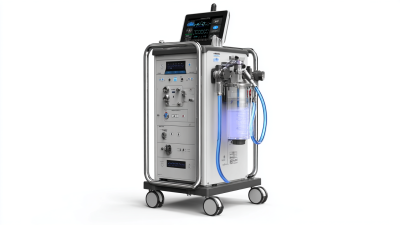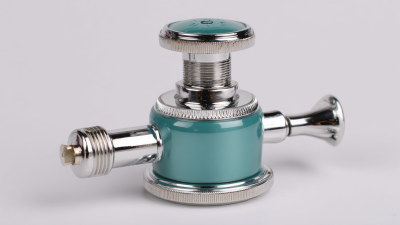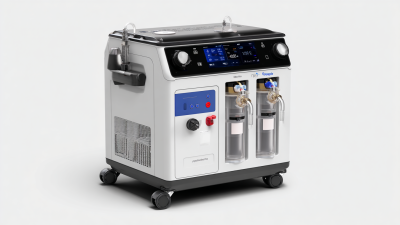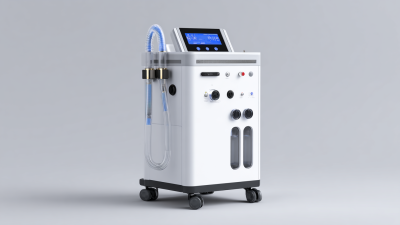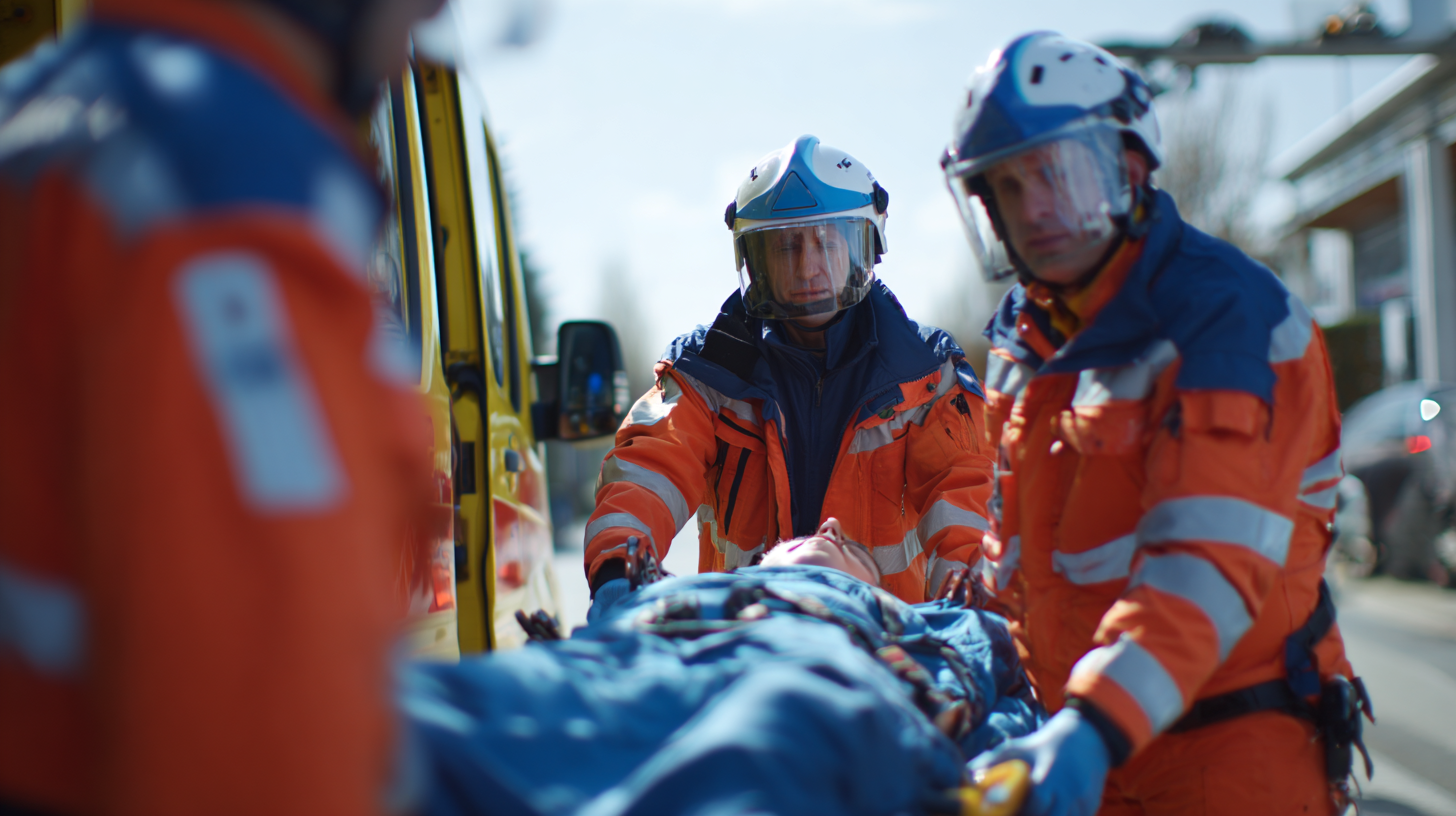 In the realm of emergency healthcare, the significance of the Mobile Suction Machine cannot be overstated. These innovative devices are essential for clearing airways and ensuring that patients receive timely and effective care during critical moments.
With the fast-paced nature of emergency situations, the portability and efficiency of mobile suction machines allow healthcare professionals to respond promptly, thereby reducing the risk of severe complications.
In addition to their role in airway management, these machines can be equipped with various functionalities to accommodate diverse clinical scenarios, making them versatile tools in the arsenal of emergency medical services.
Understanding the importance of mobile suction machines goes beyond mere functionality; it encompasses the need for rapid interventions that can ultimately save lives. This article aims to delve into the various aspects of mobile suction machines, offering insights and tips on their best practices and implementation in emergency healthcare settings.
In the realm of emergency healthcare, the significance of the Mobile Suction Machine cannot be overstated. These innovative devices are essential for clearing airways and ensuring that patients receive timely and effective care during critical moments.
With the fast-paced nature of emergency situations, the portability and efficiency of mobile suction machines allow healthcare professionals to respond promptly, thereby reducing the risk of severe complications.
In addition to their role in airway management, these machines can be equipped with various functionalities to accommodate diverse clinical scenarios, making them versatile tools in the arsenal of emergency medical services.
Understanding the importance of mobile suction machines goes beyond mere functionality; it encompasses the need for rapid interventions that can ultimately save lives. This article aims to delve into the various aspects of mobile suction machines, offering insights and tips on their best practices and implementation in emergency healthcare settings.
Mobile suction machines are crucial in emergency response situations, playing a pivotal role in maintaining airway patency for patients in distress. According to the World Health Organization, an estimated 30% of cardiac arrest victims will develop airway obstructions, underscoring the need for efficient suction methods during critical moments. In emergency care settings, time is of the essence, and mobile suction machines allow first responders to quickly remove obstructions such as blood, vomit, or secretions, significantly increasing the chance of survival.
Moreover, a study published in the Journal of Emergency Medicine shows that the timely use of mobile suction devices can reduce mortality rates by 20% in patients experiencing severe trauma or respiratory distress. With advancements in technology, modern mobile suction machines are designed to be lightweight, portable, and easy to operate, enabling paramedics and first responders to transport them effortlessly to various emergency sites. This capability is vital, especially in scenarios such as natural disasters where traditional facilities may be compromised, and every second counts in delivering effective healthcare.

Airway obstruction remains a significant challenge in emergency healthcare, as it accounts for approximately 6% of all trauma deaths in the United States. Data from the Centers for Disease Control and Prevention (CDC) highlights that choking is a leading cause of unintentional injury deaths, especially among children under the age of four. This alarming statistic underscores the critical need for effective airway management tools, such as mobile suction machines, in emergency settings.
In emergencies, timely intervention is crucial. Studies indicate that the average time for emergency medical services to arrive can exceed 8 minutes, which may prove fatal if adequate airway management is not performed swiftly. Mobile suction machines are vital in these situations, providing immediate suctioning capabilities to clear obstructions caused by blood, vomit, or foreign objects. The World Health Organization (WHO) recommends the availability of suction devices as part of essential emergency equipment, particularly in out-of-hospital settings, where the challenges of airway management can lead to diminished patient outcomes. Such statistics reinforce the imperative for healthcare providers to equip themselves with reliable suction solutions to combat airway obstructions effectively.

In the realm of emergency healthcare, the choice between mobile and stationary suction machines plays a crucial role in patient outcomes. Mobile suction machines offer unparalleled flexibility, enabling rapid deployment in various settings, from ambulances to disaster sites. In contrast, stationary suction machines are typically found in hospitals and clinics, providing reliable suction in controlled environments. This comparative analysis highlights how mobile units can bridge gaps in emergency situations, especially when time-sensitive interventions are required.
As the demand for efficient healthcare solutions grows, insights from recent industry reports indicate a significant transformation in medical technology. A comprehensive analysis reveals that mobile healthcare equipment, including suction machines, is projected to see robust growth, paralleling trends observed in other sectors like drone delivery services, which is expected to exceed $523 million by 2032. This surge emphasizes the importance of swift and accessible medical technology in improving patient care.
Tips: When considering suction machines for emergency healthcare, prioritize portability and battery life to ensure reliable operation in remote areas. Additionally, training healthcare professionals on the use of mobile suction devices can enhance response efficiency during critical moments. Explore advanced features that integrate with emergency protocols for optimal performance.
Mobile suction machines have emerged as a critical tool in emergency healthcare, significantly affecting patient outcomes in critical care settings. A study published in the Journal of Emergency Medical Services reported that the timely use of portable suction devices improved airway management success rates by over 30% in emergency situations. This advancement is particularly vital for patients suffering from respiratory distress, as suctioning can remove obstructions quickly, allowing for better oxygenation and stabilizing conditions prior to further intervention.
Moreover, case studies from numerous hospitals highlight the profound impact that mobile suction machines have on survival rates during emergencies. For instance, a report from the American Association for Respiratory Care indicated that emergency departments equipped with mobile suction units experienced a 20% reduction in mortality rates among patients with acute respiratory issues. These devices not only facilitate quicker response times but also enhance the overall quality of care.
By integrating mobile suction machines into emergency protocols, healthcare providers are better equipped to address life-threatening situations effectively, showcasing the critical role these devices play in improving patient outcomes.
Mobile suction machines play a crucial role in emergency healthcare, facilitating timely interventions that can save lives, particularly in cases of airway obstruction. As we look to the future, advancements in mobile suction technology are set to revolutionize the landscape of emergency services. According to a 2023 report by the Global Health Organization, nearly 50% of emergency medical calls involve airway management, underscoring the need for more efficient suction solutions. Innovations such as portable power sources and improved suction efficacy are helping healthcare providers respond more effectively in critical situations.
One emerging trend is the integration of smart technology into mobile suction devices, allowing for real-time data tracking and management. These devices can now offer features like suction pressure monitoring and connectivity to telehealth platforms, enabling paramedics to relay critical information to hospitals before arrival. Research from the Journal of Emergency Medicine highlights that the use of advanced mobile suction machines can reduce response times by up to 25%, thereby increasing survival rates for patients with critical airway issues.
**Tips:** When selecting a mobile suction machine, consider the weight and portability for ease of transport, especially in emergency situations. Additionally, look for models with battery life that can handle multiple calls without needing a recharge. Regular training on the use and maintenance of these devices is essential to ensure that emergency teams can operate them effectively in high-pressure scenarios.
